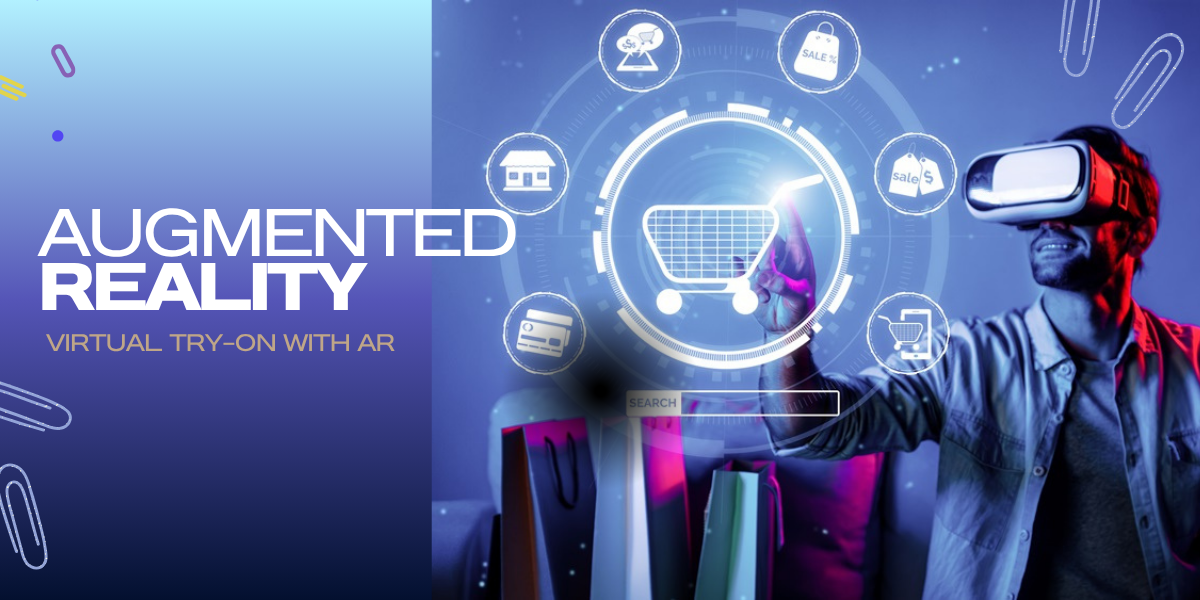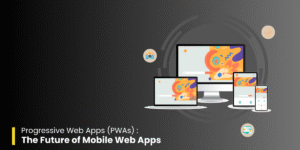While online shopping has improved our lives, shopping is still a challenge online, because you can’t touch, feel, or try the products before you buy them. This disconnect can leave shoppers feeling uncertain about their purchases, resulting in returns and frustration for both consumer and brand. This is where augmented reality (AR) comes in. With AR technology, customers can see how clothes fit, what makeup looks like on their face, or how an accessory fits their style, all through their phone or tablet. This changes the experience of internet shopping, mitigating uncertainty and empowering the consumer. For marketers, the integration of immersive experiences could be equally valuable when compared in potential to a digital marketing certification course. It also gives them an engaging and effective way to connect with customers in conversion.
What Is Virtual Try-On Technology?
Virtual try-on technology is one of those innovations that quietly change how we shop. It uses augmented reality (AR) to overlay digital products into your real-world view, so instead of sort of imagining what a shade of lipstick or pair of sneakers might look like on you, you actually see it on you through your screen.
Here’s how it works: AR scans your face or body in real-time; as you move, the AR uses both facial and body tracking to render everything in place in real-time. Real-time rendering also means adjustments for shadows, light, and angles are done as you move, so it all feels natural. There’s also no extra gear or setup; AR technology works with just about every smartphone, tablet, and laptop.

In sum, virtual try-on technology removes uncertainty and brings a sense of confidence that your static image simply can’t.
Why Brands Are Embracing AR Try-Ons
- Improved Customer Experience
AR try-ons provide a new way for consumers to shop online. At the point they selected a product, it was not a guess of how it might look, they can see it on them to remove the uncertainty that usually accompanies e-commerce shopping, while creating a personalized and engaging experience. Virtualization of trying on lipstick colors, shoes or sunglasses, virtually engages the consumer in the experience, and facilitates a more rapid and confident purchasing experience.
- Higher Conversion Rates
When buyers are confident in what they are purchasing, they are much more likely to complete the purchase. AR try-ons enhance that confidence. Brands that leverage this technology often experience increases in engagement and sales because customers trusted what they saw.
- Reduced Return Rates
Returns drop because shoppers know what to expect. The product they see on screen is a close match to what arrives at their door, cutting down disappointment and saving companies money.
- Social Sharing
People love to show off new experiences. Virtual try-ons often are shared via Instagram or Snapchat, allowing the shopper to show their friends what they look like. This type of genuine, word-of-mouth publicity provides brands with free marketing and credibility.
Brand Spotlights: Real-World Applications
Sephora:
Sephora set the stage early for how brands in the beauty space could leverage technology. Its Virtual Artist app lets customers try on makeup using their phone camera. You can swipe through lipstick shades, test different foundations, or compare eye shadows in seconds. It’s simple, but it makes a big difference, people buy faster because they can see exactly what works for them instead of guessing from photos.
Gucci:
Gucci went the AR route with sneakers, partnering with Wanna Kicks. You open the app, point your phone at your feet, and the shoes appear as if you’re wearing them. It’s fun, a bit futuristic, and it helps shoppers feel confident about their purchase. For a luxury brand, it’s also a way to connect with younger audiences who live on their phones.
Ray-Ban:
Purchasing eyewear online can be difficult. Ray-Ban’s virtual try-on takes the guesswork out of trying glasses. You can see how the different frames work with your face and adjust angles as if you were looking in a mirror. It feels organic and allows people to skip the hassle of returning frames that do not fit well.
L’Oréal:
L’Oréal made AR makeup accessible on Instagram with their partnership with Meta. You can try lipstick directly through filters and shop for the shades instantly. It is shopping slipped into typical social media scrolling, quick, organic, and easy.

Industry-Specific Innovations
- Fashion:
AR is making a significant impression on the industry. Brands such as Burberry and H&M are using it to present fit cues to customers before they make a purchase. Online shoppers can view clothing on themselves in real-time rather than relying on size charts or seeing models in photos. This immediate experience adds a sense of personalization and makes the act of shopping online feel less risky and more like a legitimate purchase. Those factors result in fewer returns from errant purchases and allow the shopper more confidence in what they are buying.
- Beauty:
In beauty retail and cosmetics, AR is practically a “must-have.” L’Oréal and Ulta Beauty, for example, offer virtual try-ons so customers can sample shades of lipstick, blush, or foundation from their phone. It’s quick, doesn’t make a mess, and is surprisingly accurate. People can find the right color for their skin tone without visiting a store, which has changed how beauty products are sold online.
- Eyewear:
Warby Parker was among the first to use AR for eyewear shopping. Their app lets customers try on glasses virtually, turning a tedious process into something quick and practical. Seeing how frames sit on your face makes decision-making easier and more reliable.
The Future of AR in Marketing
AR is still in its early days, but the pace of improvement is rapid. As the technology becomes sharper and faster, virtual try-ons will look even more realistic, down to texture, lighting, and movement. That means shoppers will soon be able to “feel” how a fabric drapes or how a shade reacts to natural light, all through their screen.
Social media is also shaping the next phase. Instagram and Snapchat already use AR filters for fun, but brands are turning those filters into shoppable experiences. You can try on a product, share it with friends, and buy it instantly, all inside the same app.
The next step is personalization. Future AR systems will likely study your style preferences, size, and past purchases to suggest products that truly fit you. It’s not just interactive marketing anymore, it’s marketing built around you.
Conclusion: Welcoming the Age of AR
Augmented Reality is not just a nice-to-have perk for brands anymore, it is an actual competitive advantage. Virtual try-on experiences are helping to create a modern interactive shopping journey that can differentiate brands in busy marketplaces. Not only do they foster trust with the brand and the integrity of the purchases but they can also reduce returns and drive repeat purchases.
For consumers, AR generates convenience and confidence. By eliminating the guesswork of online shopping, the entire customer journey becomes more personal and enjoyable. As more brands start embracing this form of technology, marketers and students enrolled in digital marketing training courses in Mumbai will start learning how to leverage creativity and technology to create experiences that can develop a real bond with people, rather than just trying to sell a product.




